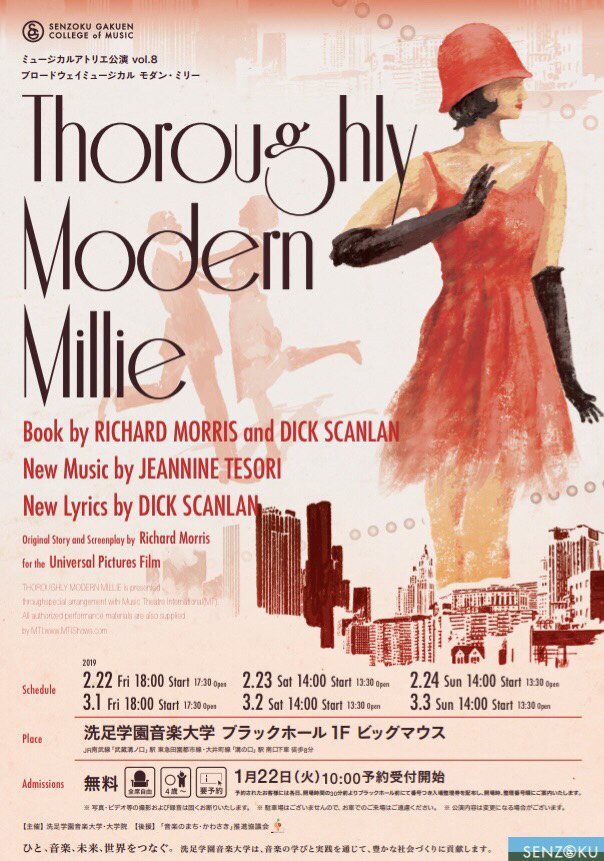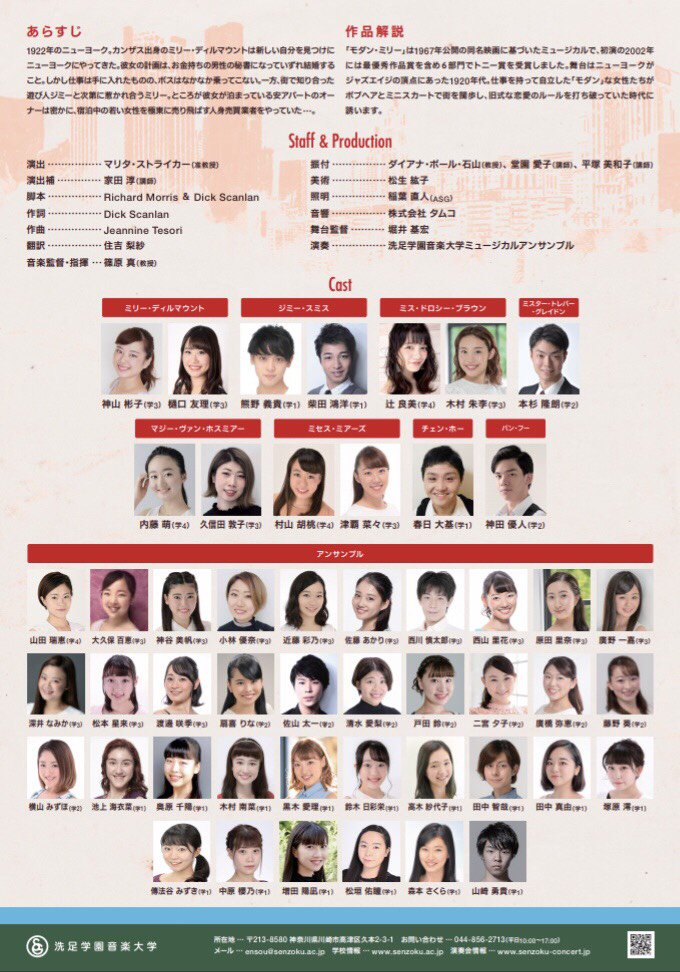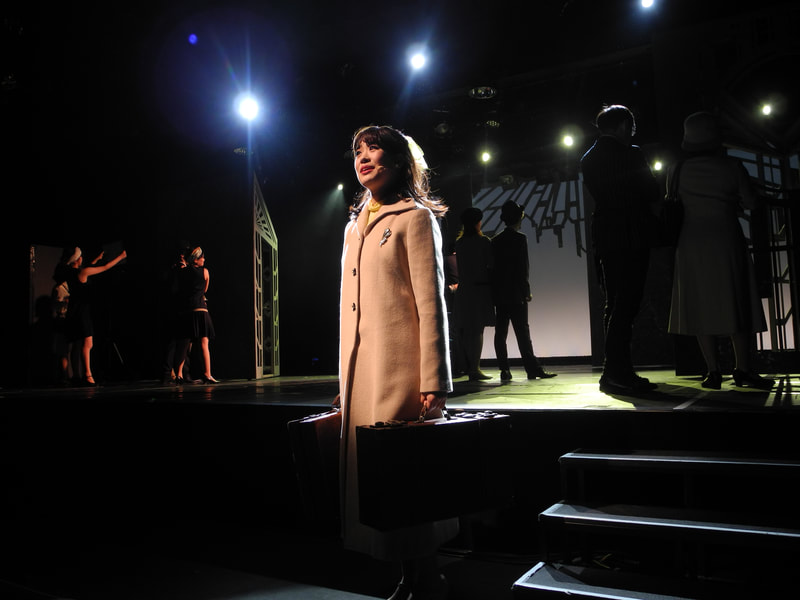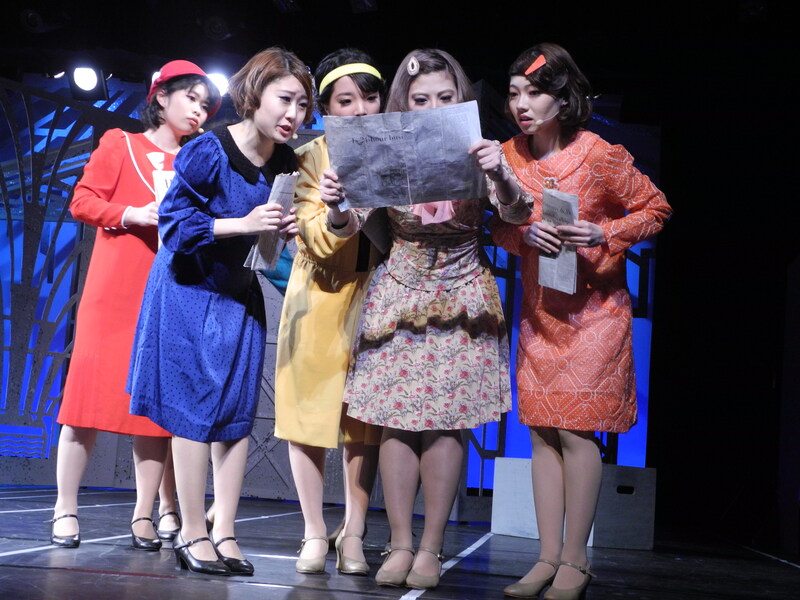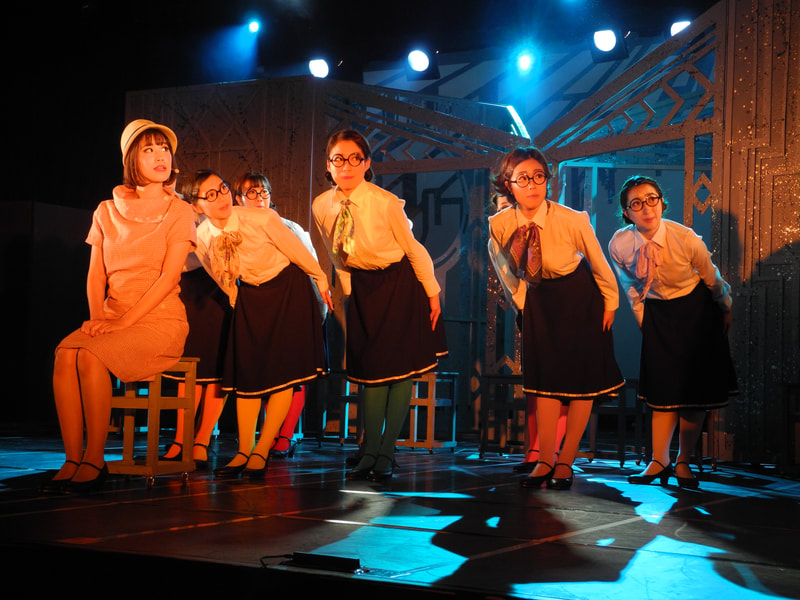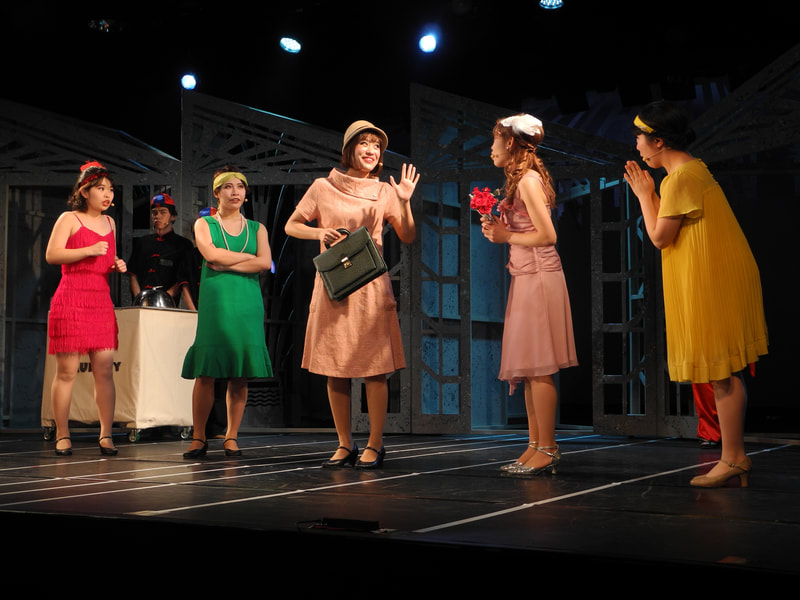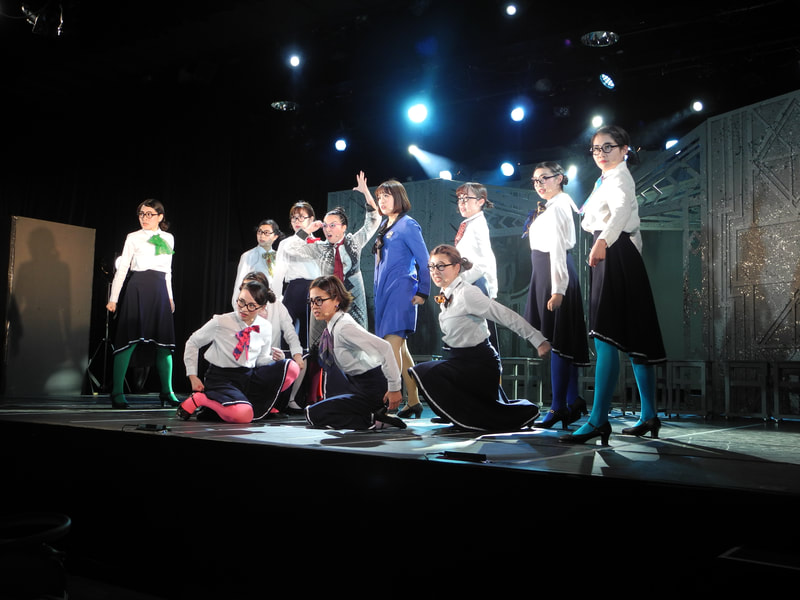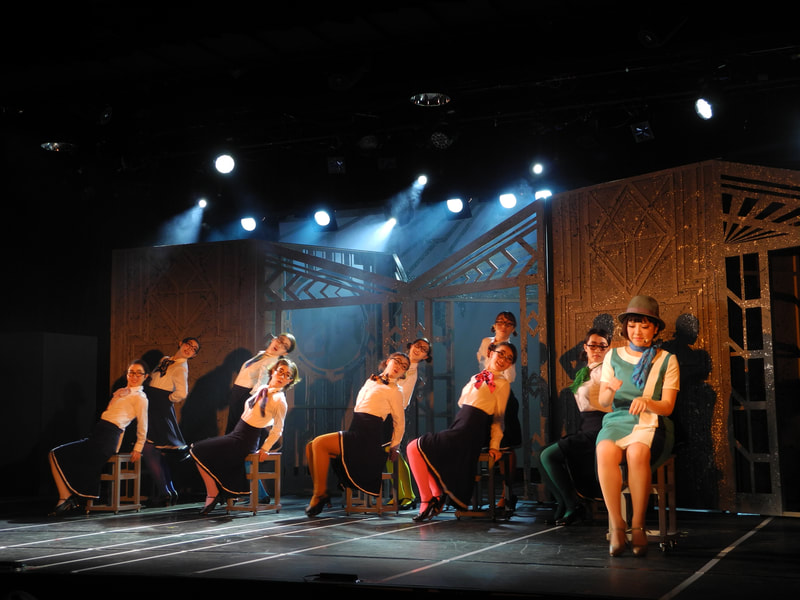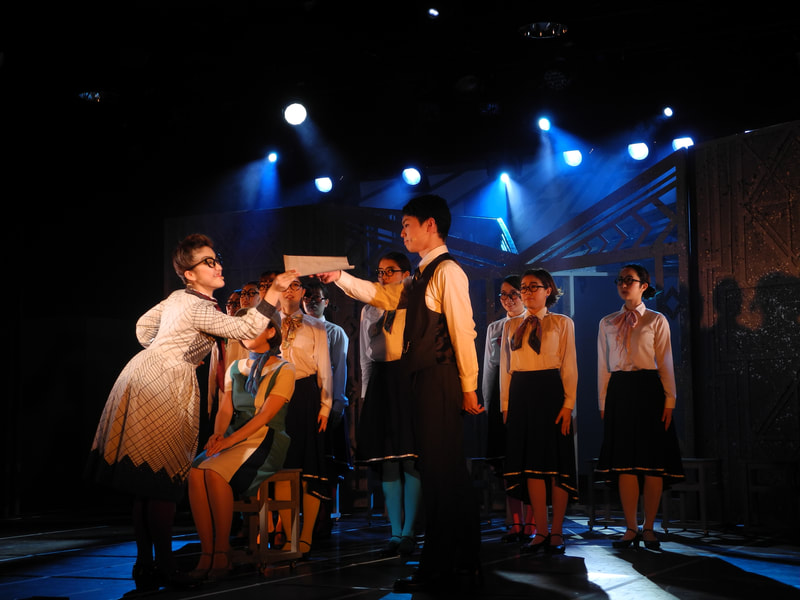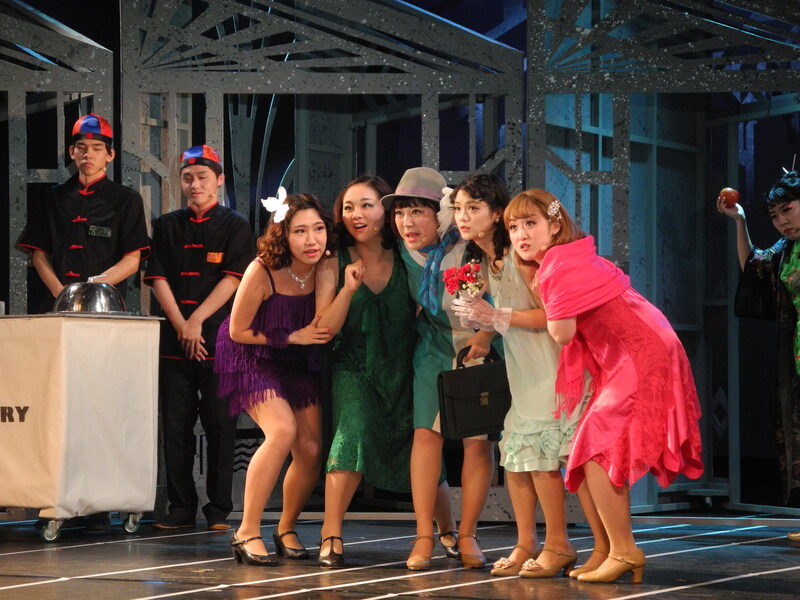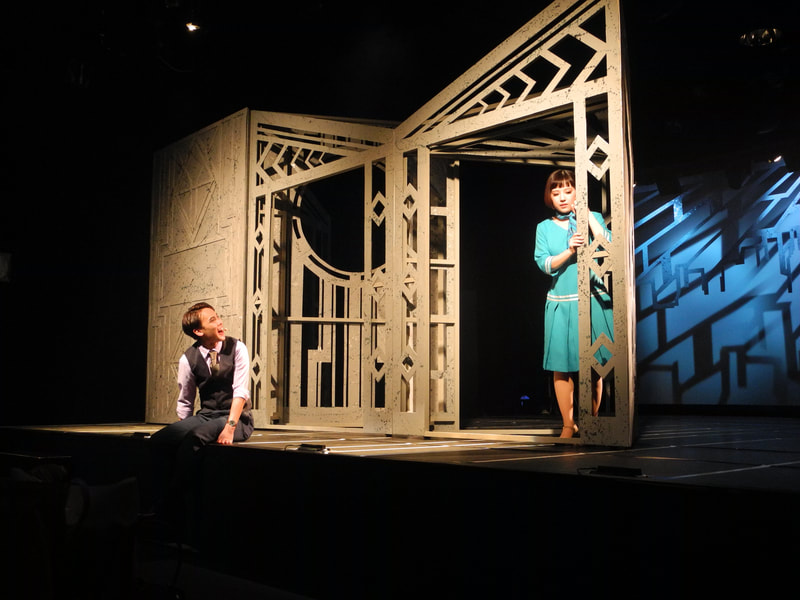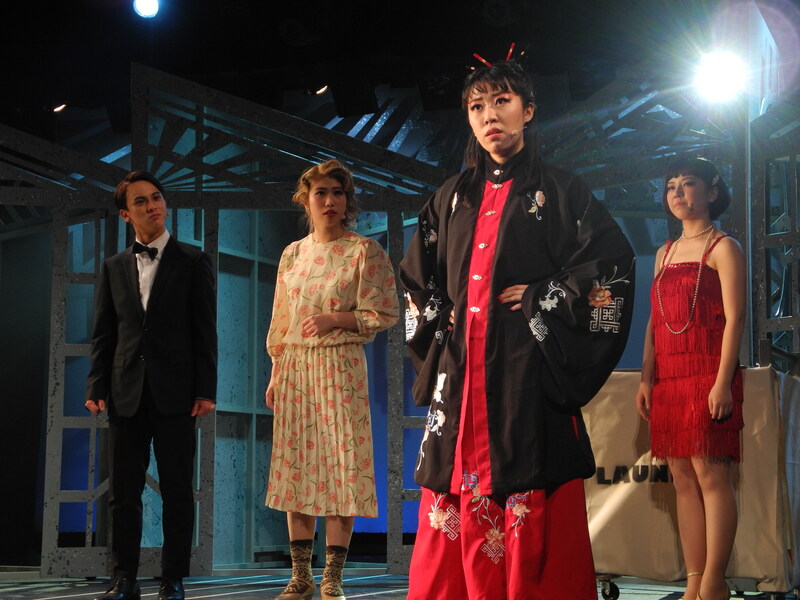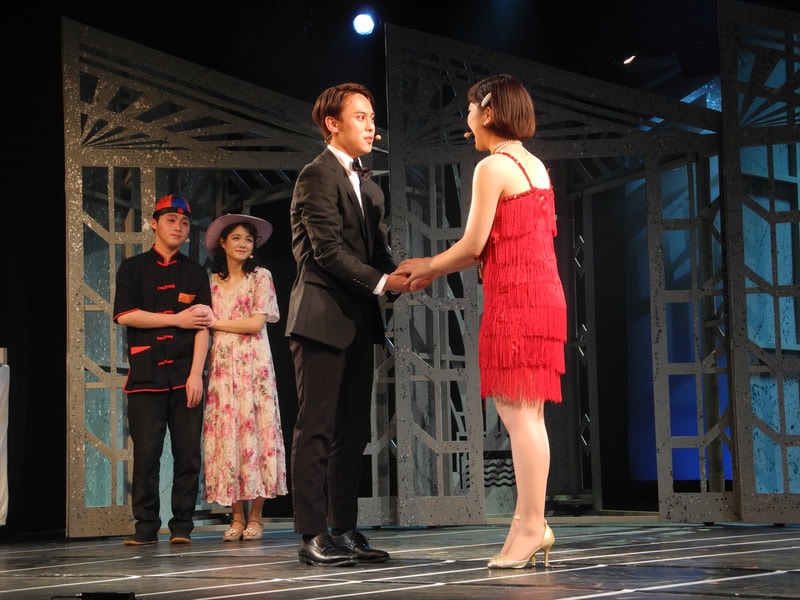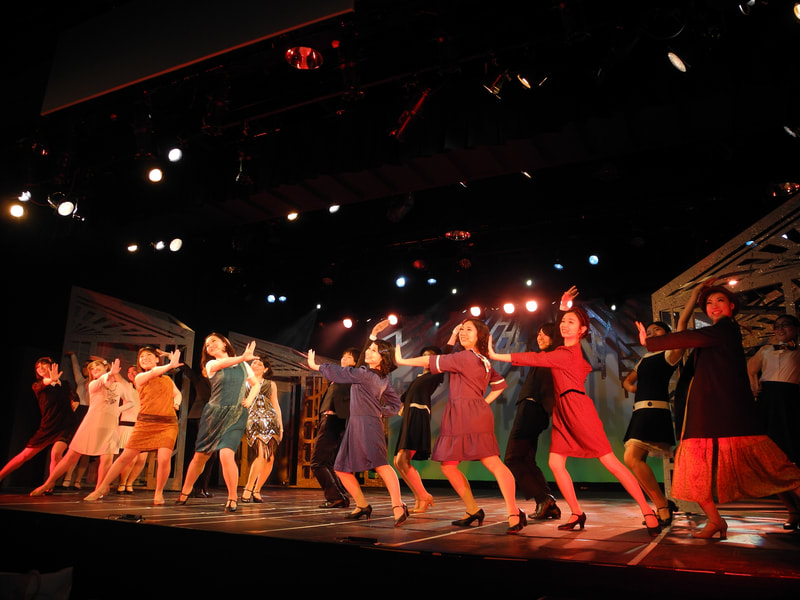Senzoku Gakuen has done this show two other times, but this was the first time producing it in the small black box-like theatre on campus. Fitting a large-scale production like Millie onto a small house stage (with a small house budget) was a challenge, but with our brilliant scenic designer, we settled on the idea of five rotating units that, in combination, and with small add-ons, could cover the large variety of settings in the show. Using the art deco design from the period and the idea of sun and moonlight making its way through the alleys of New York City, we dove into a look for the show.
Directing a book show in a different language is a huge challenge, especially with a musical that I know so well. Many jokes are changed or taken out, references are lost, and emphasis or intentions are shuffled a bit. With the help of my associate director and translator, June Iyeda, I learned the show again in a new way. We stepped into dramaturgical shoes and helped the students understand the time and feel of New York City in general and in the 1920s. It may be my music background, but I find that listening to music is the most accessible door to understanding a period. I put together a long playlist and albums of photos for the students to study, along with explanations of some of the musical comedy, satire, and vaudevillian tools used in the show.
Directing a book show in a different language is a huge challenge, especially with a musical that I know so well. Many jokes are changed or taken out, references are lost, and emphasis or intentions are shuffled a bit. With the help of my associate director and translator, June Iyeda, I learned the show again in a new way. We stepped into dramaturgical shoes and helped the students understand the time and feel of New York City in general and in the 1920s. It may be my music background, but I find that listening to music is the most accessible door to understanding a period. I put together a long playlist and albums of photos for the students to study, along with explanations of some of the musical comedy, satire, and vaudevillian tools used in the show.
Director - Marita Stryker
Associate Director - June Iyeda
Choreographers - Dianna Ishiyama, Miwako Hiratsuka, Aiko Dozono
Music Assistant - Mitsuki Goto
Conductor - Makoto Shinohara
Stage Manager - Motohiro Horii
Scenic & Costume Designer - Hiroko Matsuo
Lighting Designer - Naoto Inaba
Sound Design - Tamco
Associate Director - June Iyeda
Choreographers - Dianna Ishiyama, Miwako Hiratsuka, Aiko Dozono
Music Assistant - Mitsuki Goto
Conductor - Makoto Shinohara
Stage Manager - Motohiro Horii
Scenic & Costume Designer - Hiroko Matsuo
Lighting Designer - Naoto Inaba
Sound Design - Tamco
